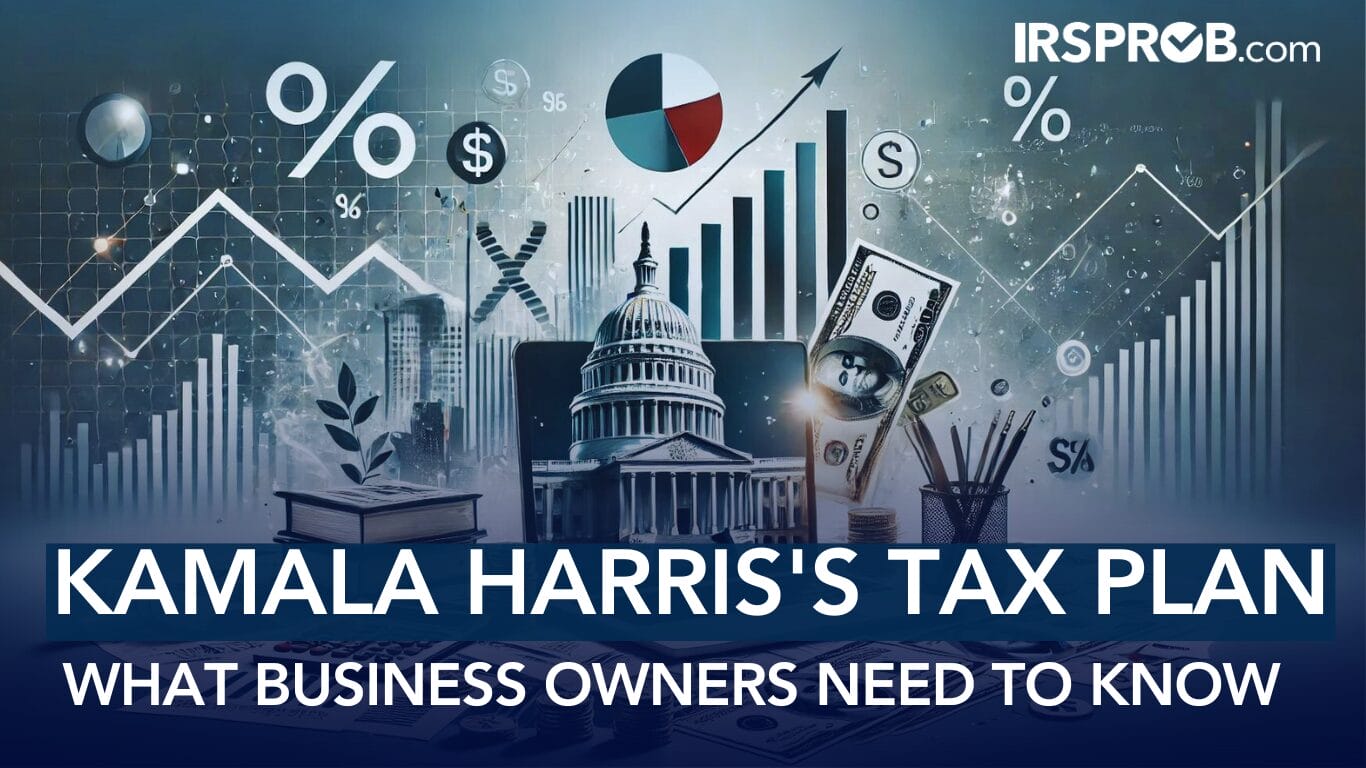
As the 2024 election approaches, Vice President Kamala Harris, the Democratic nominee for president, has outlined her tax policy agenda, which largely builds on President Biden’s earlier proposals. Understanding these changes is crucial for business owners as they navigate the potential impacts on their finances.
Overview of Harris’s Tax Proposals
Kamala Harris’s tax plan focuses on increasing taxes for high-income households and corporations while offering tax cuts and credits for middle- and lower-income families. The plan could raise around $5 trillion in taxes over the next decade while providing $4 trillion in tax cuts.
Key Aspects of the Plan:
- Higher Taxes on High-Income Households:
- The top marginal tax rate for individuals would rise to 44.6%, the highest since 1986.
- Capital gains for households earning over $1 million would be taxed as ordinary income, significantly increasing the tax burden on wealthy investors and business owners.
- Unrealized capital gains for individuals with net worths exceeding $100 million would be subject to a minimum tax, aiming to close a significant loophole.
2. Corporate Tax Increases:
- The corporate tax rate would increase from 21% to 28%, pushing the U.S. back towards the higher end of global tax rates.
- Large corporations would face a minimum tax of 21% on profits, up from the current 15%, along with higher taxes on foreign earnings.
3.Protection for Middle-Income Households:
- Households earning under $400,000 would not see any tax increases. This is a continuation of Biden’s pledge to shield the middle class from additional tax burdens.
- The expanded Child Tax Credit, which was in effect in 2021, would be reinstated, providing $3,000 per child and $3,600 for children under six. Additionally, a new $6,000 credit for newborns is proposed.
Implications for Business Owners
The proposed changes would have significant implications for business owners, particularly those in higher income brackets or with substantial capital investments.
Impact on High-Income Business Owners:
- The increased marginal tax rate and the taxation of unrealized capital gains could lead to higher tax liabilities for business owners who fall into these categories. This might influence decisions regarding investment, asset sales, and estate planning.
Corporate Tax Increases:
- The rise in corporate tax rates could reduce after-tax profits, potentially leading to lower reinvestment in businesses, slower growth, and increased prices passed on to consumers. Additionally, companies with substantial foreign earnings would face higher taxes, affecting global operations and competitiveness.
No Increases for Most Small Businesses:
- For business owners earning less than $400,000, the absence of tax increases might provide stability. However, the broader economic impacts of higher corporate taxes could still indirectly affect them through supply chain changes and shifts in market dynamics.
Considerations and Strategic Planning
Business owners should start considering the potential impacts of these tax changes on their financial strategies. Here are some steps to take:
- Review Investment Strategies:
- Estate Planning:
- The proposed changes to capital gains taxation at death and the potential reduction of the estate tax exemption in 2026 highlight the need for proactive estate planning.
- Corporate Structure Review:
- Businesses might explore different structures or strategies to mitigate the impact of higher corporate taxes, such as shifting income or considering tax-advantaged opportunities.
- Advocacy and Monitoring:
- Stay informed and involved in advocacy efforts, particularly if your business would be significantly impacted. The political landscape can shift, and being active in these discussions could influence outcomes.
Conclusion
In conclusion, while Kamala Harris’s tax plan aims to increase fairness by targeting high-income individuals and large corporations, it could also bring challenges for business owners, particularly those with significant wealth or larger companies. Now is the time to prepare for these potential changes and adapt your financial strategies accordingly.









